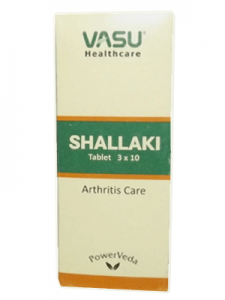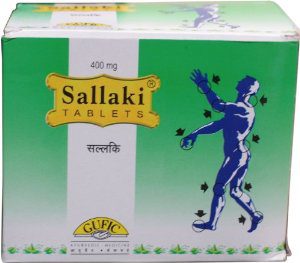In this post Rahul Bajaj, discusses the recent judgment in Gufic Private Limited and Anr. Versus Vasu Healthcare Limited .
There are few greater joys in the life of an IP enthusiast than reading an eloquent, nuanced and pithy judgment of Justice Gautam Patel of the Bombay High Court. His recent judgment in the case of Gufic Private Limited and Anr. Versus Vasu Healthcare Limited (Notice of Motion No. 399 of 2013 in Suit No. 164 of 2013 decided on 28.03.2016) is another excellent example of why he has been consistently ranked as one of the world’s 50 most influential IP thinkers.
We have covered another judgment of Justice Patel on descriptive marks here and two interesting Delhi High Court judgments on the subject here
Facts
The Plaintiff (“Gufic”) adopted the mark ‘SALLAKI’ in 1981 which it uses in conjunction with an ayurvedic tablet that is a pain reliever. Gufic’s trademark was registered with effect from January 13, 1982 and the registration has been periodically renewed. Gufic claimed that it learnt of the Defendant’s preparation bearing the mark ‘SHALLAKI’ in May 2009.
Consequently, Gufic’s advocates sent a cease and desist notice to the Defendant on May 7, 2009 in response to which the Defendant’s advocates contended that they were awaiting instructions. Gufic’s advocates sent two further notices on December 6, 2010 and October 27, 2012 to which there was no response.
Arguments on nature of mark:
The decision of Gufic’s plea for the grant of injunction essentially turned on whether or not the mark was descriptive. It would therefore be instructive to analyze the arguments advanced by both parties in support of their respective positions.
Gufic argued that the mark SALLAKI has acquired a considerable amount of reputation and goodwill – an assertion best evidenced by the fact that it had sold SALLAKI products worth Indian Rupees 7.5 crores in 2011-12 and incurred substantial expenditure in its advertising and promotion campaigns.
In order to substantiate the argument that the mark SALLAKI is not descriptive, Gufic advanced 3 central arguments.
First, relying on its legal battle with Himalaya Drug Company, Gufic argued that it was unequivocally recognized by a single judge of the Bombay High Court that the mark SALLAKI isn’t descriptive. Therefore an argument which was squarely rejected in one case, Gufic argued, cannot be pressed into service in another.
Second, Gufic placed heavy reliance on a factual determination made by the IPAB to the effect that the word SALLAKI cannot be said to be descriptive, in light of the fact that it has acquired a secondary meaning on account of Gufic’s extensive use.
Finally, relying on Justice Patel’s own judgment in Jagdish Gopal Kamath versus Lime and Chilli Hospitality Services, Gufic argued that a mark can be said to be generic/descriptive only if its use has become so widespread that it can no longer be associated with a single trader. None of the material put forth by the Defendant, Gufic argued, was sufficient to meet this high threshold.
On the other end of the spectrum, the Defendant advanced 3 main arguments in support of the proposition that the mark SALLAKI was descriptive and, therefore, did not merit protection.
First, it sought to undercut the probative value of the factual determination made by the two courts that dealt with a similar controversy in the past by pointing out that the single judge’s findings in the Himalaya Drug Company case were reversed by the Supreme Court and, in the same way, a writ petition has been admitted against the IPAB’s observations.
Second, relying on the Indian Council for Medical Research’s review of medicinal plants, the Defendant argued that the plant from which this ayurvedic medicine is derived is called SALLAKI in Sanskrit. It sought to further fortify this argument by referring to a private publication which also states that the Sanskrit name of the plant is Sallaki. On the basis of this evidence, the Defendant argued, the word SALLAKI was the most obvious and ordinary name that the Plaintiff could have selected for the tablet in the prevailing circumstances.
Finally, in order to show how the mark in question was being commonly used, the Defendant gave 16 concrete examples of how the mark SALLAKI or its variants were being used by a large array of manufacturers in the concerned trade.
Decision of the court:
Justice Patel prefaced his analysis by noting that the Defendant’s argument lacked any sense of clarity on account of the fact that the material put forth by the Defendant itself indicated that the plant from which the tablet was derived had multiple names in multiple languages. Therefore, it would be nonsensical, he held, to accept the proposition that all the names attributable to the plant were merely descriptive and fell beyond the pale of trademark protection.
Thereafter, he turned his attention to the central question in the dispute which he enunciated in the following way: “The distinction here is, in my view, a question of testing whether the present Defendant is using the mark as a trade mark or in a purely descriptive sense.”
He then proceeded to delineate 2 main reasons for arriving at the conclusion that the Defendant was using the impugned mark as a trademark and not merely for a descriptive purpose.
First, a closer analysis of the visual get-up of the Defendant’s package, he held, gave rise to the inexorable conclusion that the same was being used purely in a ‘trade marky’ sense. While he accepted the Defendant’s argument that the use of the trade mark symbol in the first iteration of the package was inadvertent, he held that, even sans such a symbol, the visual prominence of the mark left no doubt about its character.
Second, he held that no cogent or specific evidence was brought on record to indicate how the mark was actually as popular or widely in demand as the Defendant would have everyone believe. Rejecting the Defendant’s argument that the mark was being widely used on a number of websites with a rhetorical flourish that would have made Justice Krishna Iyer proud, he held: “If there exists one truism today it is that just because something is found on the Internet it is not only for that reason necessarily and invariably true.”
Finally, noting that the likelihood of deception would be much greater in case of ayurvedic medication on account of the target audience, he granted an injunction in favour of the Plaintiff.
At a time when legitimate claims of Plaintiffs for passing off/infringement are being thwarted by vague and unfounded arguments of descriptive use, this judgment certainly is a welcome development.
